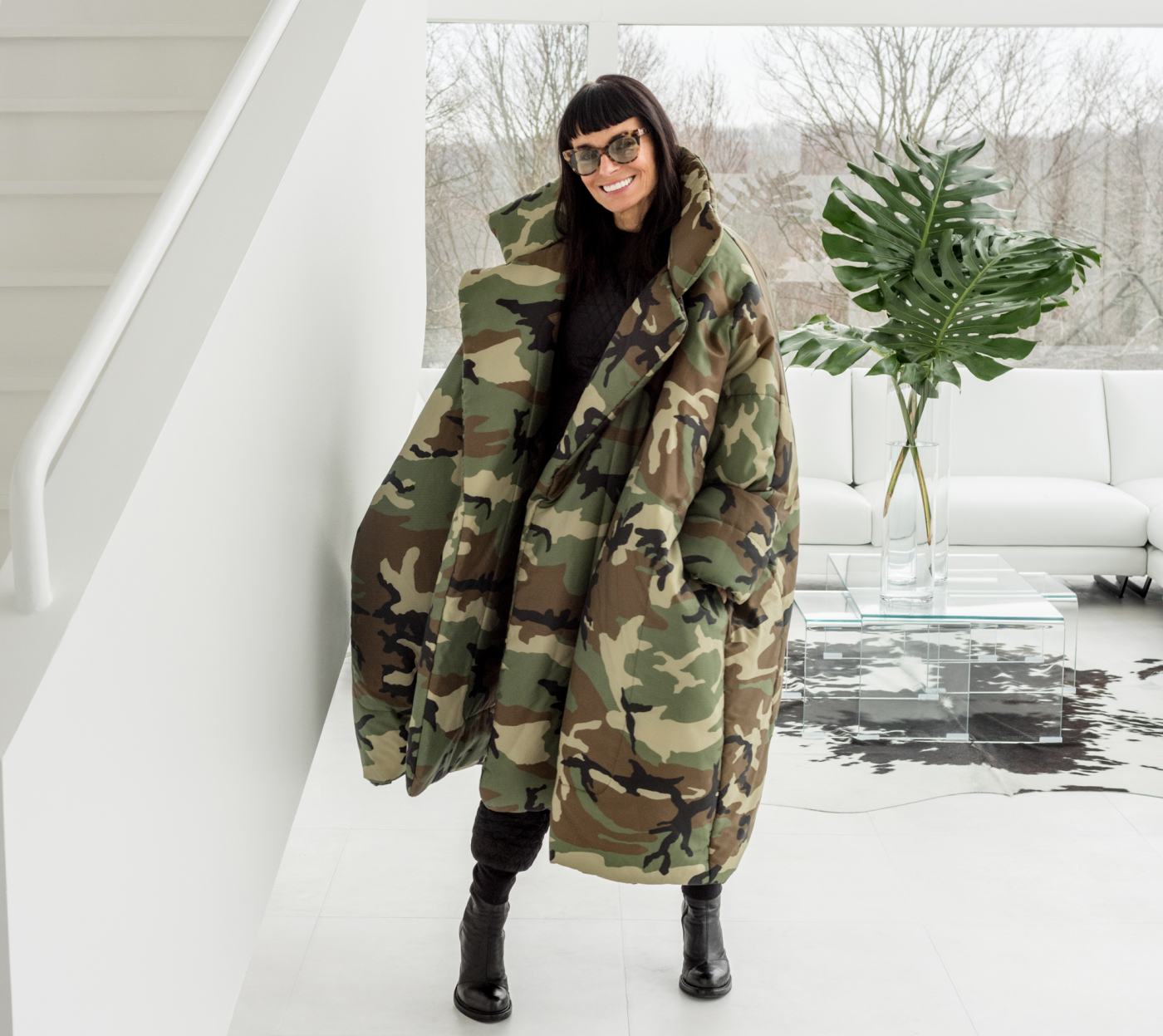
Norma Kamali chameleon
Norma Kamali may be the most New York City designer there has ever been, and will be. 50 years after launching her career she is as dynamic and contemporary as ever. Photography by Mark C. O’Flaherty

Norma Kamali may be the most New York City designer there has ever been, and will be. 50 years after launching her career she is as dynamic and contemporary as ever. Photography by Mark C. O’Flaherty

When I graduated from FIT, I really wanted to be a painter. Michelangelo is my god. My mother said, “Get a job, I’m not supporting you, I don’t care how you do it, but, get a job.” I graduated from FIT not wanting to be in the fashion industry because at the time it was all so … Mad Men, and I hated everything about it. I remember going on my first job interview and being really excited. I went into the guy’s office with my portfolio in the garment centre of the city, and he had his feet up on the desk eating a tuna sandwich. He told me to put down my portfolio and said: “Come here, turn around for me young lady.” I was so freaked out. He was the power in the room. I was humiliated and embarrassed. I left crying. I never told anybody about that, until eight years ago. After I went home I looked at jobs in classifieds of the New York Times. There were plenty of airline jobs at the time. I got a job working in an office on a UNIVAC computer and every weekend I travelled to London, round-trip, for $29. For four years, from 1965 to 1970, I was in London every weekend at the best time you could possibly be there. It was the antithesis of Mad Men, and I felt so connected to it.
I was wearing the most amazing skirts from London and people were yelling out at me in Manhattan that I was a prostitute!
I would get all of these amazing dresses at Antiquarius on the Kings Road. I was into dresses of the 1930s, I was wearing gowns every day and whatever, and I would come back with stuff from Biba, Bus Stop and all of the designers. None of that was happening in New York. I was wearing the most amazing skirts from London and people were yelling out at me in Manhattan that I was a prostitute! I was wearing wigs and lashes and I had fox boas. My whole career is an offshoot of that period of time in London.

Norma Kamali at her Mt Kisco Richard Meier-designed house, NY
Right now I think the fashion industry is so slow at taking on new technology: Look at fashion shows, they’re so old-fashioned. It’s like theatre and it’s fabulous and an intimate thing, but there’s technology now that’s global. There is technology that reaches everybody. Fashion has to be more than theatre in a box. And when it comes objectifying women and objectifying models it’s not just about body image, but rather ‘are you rich enough for this?’ Generation Z, quite frankly, is not going to spend money on a handbag when they can take a trip to Ecuador instead. The fashion industry is out of step, and it really needs to get with that.
I was never a print person. It wasn’t something I wore or thought about. it was totally out of character with my personality, but I love prints now. I realised that prints and certain kinds of colour really do well on a screen, but black does well on a screen too, in a different way. It has to be about silhouette. Designing is much better for me now because I’m connected to you if you’re following me on Instagram. I know what you like about what I’m doing, and I know what you don’t like. I listen, so that’s much better than waiting for my sales team to tell me what the buyers say, and waiting to find out through the buyer what happened in the store. Sorry, that information is so old and so off, how is that helping?

Norma Kamali
I have been making The Sleeping Bag Coat since I designed it in 1973. It originally came from a camping trip – I took the sleeping bag I’d been using, cut it up and made it into a coat. When I was doing the coats during the Studio 54 era, all of the doormen at Studio 54 wore the Sleeping Bag Coats. We did them in bright disco colours, like purple.
I remember after 9/11, nobody was doing any business. Everybody had closed. I was born and raised in New York, and I was devastated. I was looking into where I could volunteer and going around downtown to help in whatever way I could. I came back to the building and I would listen to voice messages and, one after the other, people were calling about Sleeping Bag Coats and I couldn’t understand why. The weather was really warm and we were not set to deliver the Sleeping Bag Coat for the new season until November. What was going on? I had my team return, I had my local factory go back to work, and whatever fabric we had on hand, we made the coats from. I realised it was more the cocooning effect people wanted. There were people were sleeping in hotel lobbies, so it was like a live-in sleeping bag. We sold more in that period than we ever had done. The coats look so different from any of the others, because they are made out of every fabric under the sun and they’re not necessarily nylon or waterproof. We put notes with them: “This is not necessarily an outerwear garment, it is intended to make you feel safe.” C